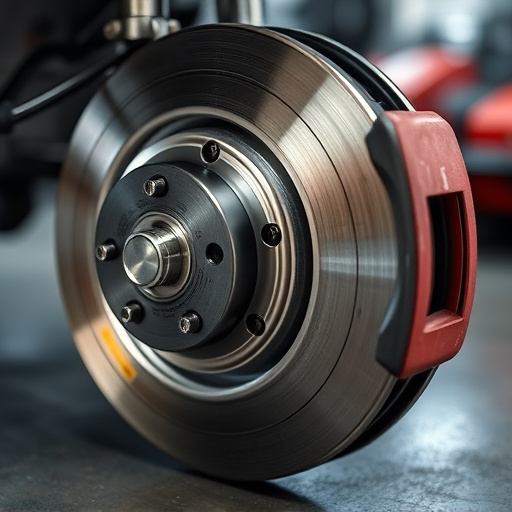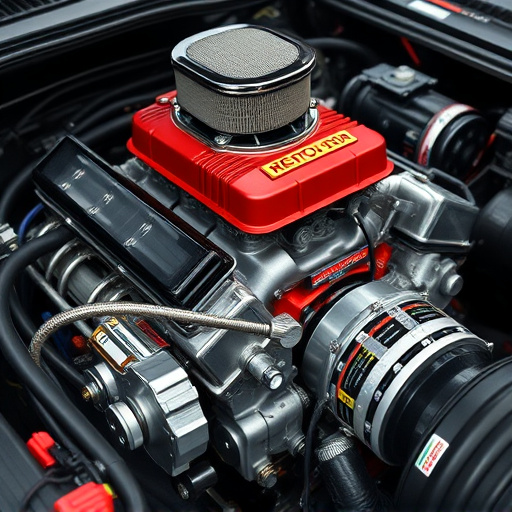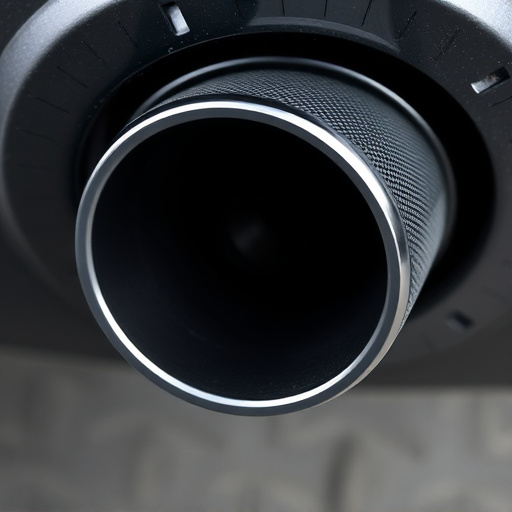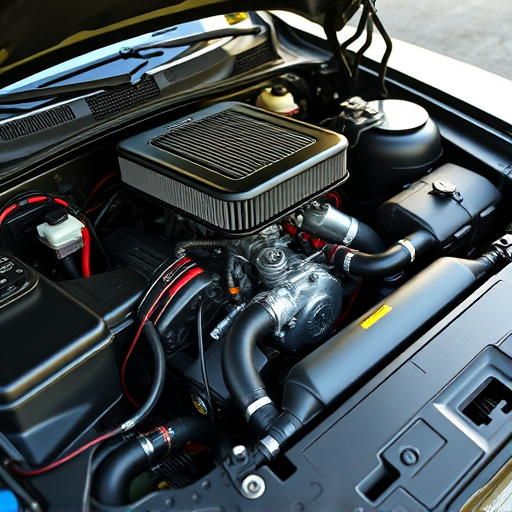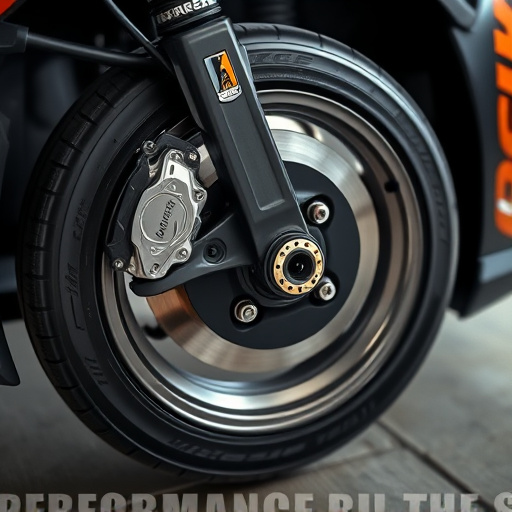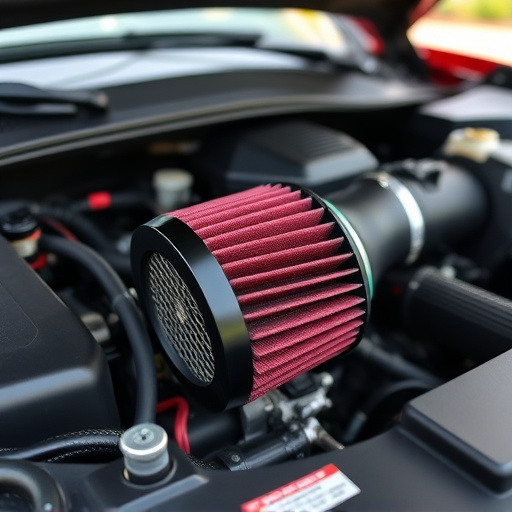Turbo wastegates are vital for turbocharged engines, regulating exhaust flow to maintain steady boost pressure under varying loads. They prevent over-boosting during partial throttle events, protecting the engine and enhancing performance by controlling air-fuel mixture entry into combustion chambers. Modern automotive engineering relies on turbo wastegates integrated with high-performance exhaust systems and air filters for precise tuning, improved drivability, fuel economy, and faster response times.
“Unleashing optimized performance from modern vehicles’ engines, the turbo wastegate stands as a pivotal technology. This article delves into the intricate world of turbo wastegates, elucidating their basic functionality and unparalleled ability to maintain stable boost under demanding conditions.
We explore how these innovative components ensure optimal power delivery, enhancing both fuel efficiency and overall driving experience. From understanding their fundamental role to examining their benefits and diverse applications in modern vehicles, this guide offers insights into the indispensable contribution of turbo wastegates.”
- Understanding Turbo Wastegates: Basic Functionality
- How They Maintain Stable Boost in Demanding Conditions
- Benefits and Applications in Modern Vehicles
Understanding Turbo Wastegates: Basic Functionality

Turbo Wastegates: Unlocking Efficient Boost Control
A turbo wastegate is a crucial component in turbocharged engines, playing a vital role in optimizing performance and fuel efficiency. Its primary function is to regulate boost pressure by selectively routing exhaust gases around the turbine of the turbocharger. This innovative mechanism ensures that the engine maintains a steady level of boost even under varying load conditions. By allowing excess exhaust flow during partial throttle events, the wastegate prevents over-boosting, which can lead to potential damage.
This simple yet effective design is integrated into the engine’s intake system, controlling the flow of gases between the turbocharger and the engine. When the driver demands more power, the wastegate opens, allowing a larger volume of air and fuel mixture to enter the combustion chamber, resulting in increased performance and faster response times. This precision control over boost pressure also contributes to improved drivability and fuel economy, making turbo wastegates an essential part of modern automotive engineering, especially when paired with high-performance exhaust systems and tailored air filter kits.
How They Maintain Stable Boost in Demanding Conditions

Turbo wastegates play a pivotal role in maintaining stable boost levels under demanding conditions. They act as a valve that controls the flow of exhaust gases from the turbine side of the turbocharger to the atmosphere, ensuring a precise balance between engine intake and exhaust. When the engine demands more power, such as during accelerated driving or heavy loads, the wastegate opens slightly to allow more exhaust gas to pass through, preventing excessive backpressure. This precise control mechanism prevents the turbocharger from spinning too quickly, which could lead to performance issues and potential damage.
This stability is crucial for optimal engine performance and efficiency. By regulating boost pressure, the turbo wastegate enables the engine to deliver consistent power output even in harsh driving conditions. Moreover, it enhances overall vehicle drivability by ensuring a smooth and responsive acceleration experience. In combination with high-performance exhaust systems, including performance exhaust, exhaust mufflers, and other modifications, the turbo wastegate becomes an integral part of crafting a powerful and reliable engine setup for enhanced driving dynamics.
Benefits and Applications in Modern Vehicles

The turbo wastegate is a pivotal component in modern vehicles, especially those equipped with turbocharged engines. Its primary benefit lies in its ability to maintain stable boost pressure under heavy load, ensuring optimal performance and fuel efficiency. By selectively diverting exhaust gases away from the turbine, the wastegate allows for precise control of turbocharger operation, preventing excessive spinning when the driver’s demand is low. This not only extends engine life but also enhances drivability by providing a more responsive and predictable power delivery.
In modern vehicles, the applications of turbo wastegates are diverse. They are commonly found in high-performance sports cars, where they enable swift acceleration and maintainable boost levels during demanding driving conditions. Additionally, many crossovers and SUVs rely on turbo wastegates to balance power output with fuel economy, catering to a wide range of driver needs. Furthermore, the integration of turbo wastegates with advanced cold air intakes and performance exhaust systems creates a holistic approach to engine tuning, allowing for fine-tuned vehicle dynamics and a more immersive driving experience.
The turbo wastegate plays a pivotal role in modern vehicles’ performance and efficiency. By intelligently regulating boost pressure, it ensures optimal engine output even under heavy load. This technology not only enhances driving experience but also contributes to better fuel economy and reduced emissions. Understanding how turbo wastegates maintain stable boost is key to appreciating their significance in the ever-evolving automotive landscape.








